How To Run Payroll In Hawaii

Running payroll in Hawaii requires startups to register with multiple state agencies and comply with both federal and state tax requirements. Hawaii employers must obtain an EIN from the IRS and register with the Hawaii Department of Taxation for withholding tax accounts before processing their first payroll. The state also requires registration with the Department of Labor & Industrial Relations for unemployment insurance.
Processing payroll in Hawaii involves higher state income tax rates compared to many other states, but most regulations align with federal labor laws. Early-stage startups face specific challenges when setting up payroll systems, from choosing between manual processing and automated solutions to managing contractor payments and international team members.
This guide covers everything Hawaii startups need to establish compliant payroll operations, including wage calculations, tax withholdings, and automation strategies that scale with growing teams. Whether setting up as a C-Corp or managing remote workers, these steps ensure accurate payroll processing while minimizing compliance risks.
Key Takeaways
- Hawaii startups must register for state tax accounts and obtain proper identification numbers before running payroll
- Automated payroll solutions help early-stage companies manage complex tax calculations and compliance requirements efficiently
- Proper setup includes handling both employee wages and contractor payments while maintaining accurate records for audits
Getting Started With Payroll In Hawaii
Tech startups in Hawaii must obtain an EIN, register with state agencies for withholding and unemployment taxes, and comply with the state's $14 minimum wage and overtime requirements. The registration process involves specific forms and timelines that differ from mainland requirements.
What Business Information Is Needed To Set Up Payroll In Hawaii?
Startups need an Employer Identification Number (EIN) from the IRS before processing payroll in Hawaii. This federal tax ID serves as the foundation for all payroll activities.
Required Federal Information:
- Business legal name and address
- Business structure (LLC, Corporation, etc.)
- Principal business activity code
- Responsible party details
Hawaii-Specific Requirements:
- Business physical address in Hawaii
- Estimated number of employees
- Expected quarterly tax liability
- Primary contact information for tax notices
The EIN application takes 10-15 minutes online. Startups receive their number immediately upon completion.
Hawaii requires additional state-specific information during registration. The withholding ID follows the format WH-000-000-0000-01/02.
How Do Startups Register For State Payroll Taxes?
Hawaii startups must register with two separate state agencies within 20 days of hiring employees in Hawaii. Each agency handles different tax responsibilities.
Hawaii Department of Taxation Registration:
- Register for income tax withholding account
- Complete registration online for immediate ID
- Mail registration takes three weeks
- Receive withholding ID in WH format
Department of Labor & Industrial Relations Registration:
- Register for unemployment insurance account
- Complete within 20 days of first hire
- Receive account number via email immediately
- New employer rate starts at 3%
The unemployment registration includes an Employment and Training assessment rate of 0.01%. This additional fee supports workforce development programs.
Startups can register online through each agency's portal. The process requires basic business information and estimated payroll amounts.
Which Payroll Laws Apply To Hawaii Tech Startups?
Hawaii tech startups must follow federal labor laws plus specific state requirements. The minimum wage currently stands at $14 per hour and increases to $16 in 2026.
Wage Requirements:
- Minimum wage: $14.00 per hour (2025)
- Overtime: 1.5x regular rate after 40 hours weekly
- Tipped employees: Minimum $7 above regular minimum wage
- Regular paydays required in writing
Tax Obligations:
- State income tax: 1.4% to 11% progressive rates
- Unemployment insurance: 3% for new employers
- Temporary disability insurance: Employer or shared cost
- Workers' compensation: Required for all employees
Tech startups often classify employees as exempt from overtime. Executive, administrative, professional, and outside sales roles may qualify for exemptions.
Hawaii requires the HW-4 form for state withholding in addition to federal W-4 forms. Startups must post wage and hour notices in employee work areas.
The state offers direct deposit, paper checks, cash, or pay cards as acceptable payment methods. Most tech companies choose direct deposit for efficiency.
Choosing The Right Payroll Solution For Startups
Early-stage startups face three main payroll options: DIY software, all-in-one platforms, and full-service providers. The best payroll software for startups balances automation, compliance features, and cost-effectiveness while supporting multi-state hiring needs.
What Payroll Options Exist For Early-Stage Startups?
Startups can choose from three distinct payroll approaches. Each option offers different levels of control, cost, and complexity.
DIY Payroll Software costs $20-40 per month plus $4-6 per employee. Companies handle all payroll tasks themselves but get basic tax filing support. This works for single-state teams under 10 employees.
All-in-One Platforms like Gusto and Rippling charge $35-80 monthly plus $8-20 per employee. They automate payroll, taxes, benefits, and HR tasks. These platforms handle multi-state compliance automatically.
Professional Employer Organizations (PEOs) such as Justworks start at $79 per employee monthly. They become the legal employer and handle all compliance, benefits, and HR administration.
Most funded startups choose all-in-one platforms. Gusto leads with over half the market share, followed by Rippling among venture-backed companies.
PEOs work best for startups needing immediate compliance support or complex benefit packages. DIY solutions only suit very small, single-state teams with simple payroll needs.
How Do All-In-One Platforms Compare To Point Solutions?
All-in-one platforms integrate payroll, benefits, HR, and compliance in one system. Point solutions focus on single functions like payroll processing or time tracking.
Integration Benefits eliminate data entry between systems. Employee information flows automatically from hiring to payroll to benefits enrollment. This reduces errors and saves administrative time.
Cost Comparison often favors all-in-one platforms for growing teams. While point solutions may cost less initially, adding HR tools, benefits administration, and compliance features increases total expenses.
Feature Depth varies significantly. Point solutions typically offer more advanced functionality in their specialty area. All-in-one platforms provide broader but sometimes less sophisticated features.
Vendor Management becomes simpler with integrated platforms. Startups deal with one support team, one contract, and one renewal cycle instead of managing multiple vendor relationships.
Most startups benefit from all-in-one platforms during rapid growth phases. Point solutions work better for established companies with specific advanced requirements or very large teams needing specialized functionality.
Which Features Should Startups Prioritize In Payroll Software?
Startup payroll software must handle core compliance requirements while supporting rapid team growth. Certain features prove essential for venture-backed companies.
Automated Tax Filing prevents costly compliance mistakes. The system should handle federal, state, and local tax deposits plus quarterly filings automatically. Multi-state support becomes critical as remote hiring expands.
Benefits Integration streamlines employee onboarding and administration. Look for 401(k), health insurance, and workers' compensation integration within the same platform.
Accounting Software Connections save bookkeeping costs. Direct QuickBooks or Xero integration eliminates manual journal entries and supports R&D tax credit calculations.
Essential Features Why Startups Need Them
Autopilot payroll Prevents missed payments during busy periods
Multi-state compliance Supports remote hiring strategies
Employee self-service Reduces HR administrative burden
API integrations Connects with existing business tools
Scalability matters more than current team size. Choose platforms that handle rapid employee growth without requiring system changes or data migrations.
Customer support quality becomes vital during fundraising and acquisition processes when startups need historical payroll data quickly.
Setting Up Payroll For Hawaii C-Corps
C-corporations in Hawaii must establish proper payroll systems to handle employee compensation and tax obligations. The setup process involves using incorporation details to streamline registration, onboarding team members correctly, and establishing payment schedules that work for the business.
How Does Incorporation Data Streamline Payroll Setup?
C-corporations can use their existing incorporation information to speed up payroll registration in Hawaii. The Federal EIN obtained during incorporation becomes essential for all payroll tax accounts.
Key incorporation details needed:
- Federal EIN number
- Business address and legal name
- Incorporation date
- Officer information
Hawaii requires C-corps to register for state withholding tax using Form BB-1 through Hawaii Tax Online. This form uses the same business details from incorporation paperwork.
The unemployment insurance registration also relies on incorporation data. C-corps must register with Hawaii's Department of Labor if they pay $1,500 or more in wages per quarter.
Having incorporation documents ready makes both registrations faster. The EIN links federal and state tax accounts together automatically.
What Are The Steps To Onboarding Employees Or Contractors?
C-corporations must collect specific documents from new hires before running payroll. Employee classification affects tax withholding requirements significantly.
Required employee documents:
- Form W-4 for tax withholding
- Form I-9 for work authorization
- Hawaii withholding allowance certificate
- Direct deposit authorization
Contractors need different paperwork. They complete Form W-9 instead of W-4. C-corps don't withhold taxes from contractor payments.
New employers in Hawaii must verify work eligibility within three days of hire. This applies to all workers regardless of citizenship status.
Employee vs contractor classification matters for payroll taxes. Misclassification can result in penalties and back taxes owed to the state.
How Do Founders Set Pay Cadence And Payment Methods?
C-corporation founders who work in the business must take reasonable salaries through payroll. Hawaii doesn't specify minimum pay frequencies, but most C-corps choose bi-weekly or monthly schedules.
Common pay schedules:
- Bi-weekly: 26 pay periods per year
- Semi-monthly: 24 pay periods per year
- Monthly: 12 pay periods per year
Payment methods include direct deposit, paper checks, or payroll cards. Direct deposit reduces processing costs and saves time for small teams.
Founders must pay themselves through payroll if they perform services for the corporation. The IRS requires reasonable compensation based on job duties and industry standards.
Pay cadence affects cash flow planning. Bi-weekly payroll means some months have three pay periods instead of two. C-corps should budget accordingly for these months.
Calculating Wages, Taxes, And Withholdings In Hawaii
Tech startups must withhold Hawaii state income taxes ranging from 1.4% to 11.0% along with federal taxes, while managing employee benefits through proper deduction systems and maintaining compliance with both state and federal payroll requirements.
Which Taxes Must Be Withheld For Hawaii Employees?
Employers must withhold Hawaii income taxes on employee wages for all workers, including seasonal, part-time, and full-time employees. The Hawaii Department of Taxation requires withholding on wages for services performed in Hawaii or outside the state if the employee's regular workplace is in Hawaii.
Hawaii income tax rates range from 1.4% to 11.0% based on the employee's income level and filing status. These progressive rates mean higher earners face larger withholding amounts.
Required Federal Withholdings:
- Federal income tax
- Social Security tax (6.2%)
- Medicare tax (1.45%)
- Federal unemployment tax (FUTA)
Required State Withholdings:
- Hawaii state income tax
- Hawaii unemployment insurance
- Temporary disability insurance
Startups must obtain a withholding account number using Form BB-1 through the Hawaii Department of Taxation. There is no fee to open this account.
How Are Benefits And Deductions Managed For Startups?
Startups can deduct pre-tax benefits from employee wages before calculating Hawaii state income tax. Common pre-tax deductions include health insurance premiums, retirement plan contributions, and flexible spending account contributions.
Post-tax deductions are subtracted after calculating all tax withholdings. These include garnishments, union dues, and certain insurance premiums that don't qualify for pre-tax treatment.
Pre-Tax Deduction Categories:
- Health insurance premiums
- Dental and vision insurance
- 401(k) contributions
- Health savings accounts (HSAs)
- Commuter benefits
Post-Tax Deduction Categories:
- Life insurance premiums over $50,000
- Disability insurance premiums
- Roth 401(k) contributions
- Wage garnishments
Employers must track both types of deductions separately for accurate tax calculations. Pre-tax deductions reduce the taxable wage base for Hawaii state income tax purposes.
What Is Required For Local And Federal Payroll Compliance?
Hawaii employers must file quarterly returns using Form HW-14 with due dates of April 15, July 15, October 15, and January 15. The Hawaii Department of Labor and Industrial Relations oversees wage and hour compliance while the Hawaii Department of Taxation handles tax withholding requirements.
Payment frequency depends on withholding tax liability amounts:
Tax Liability Payment Schedule Due Date
Over $40,000 Semi-weekly Wednesday or Friday
$5,000-$40,000 Monthly 15th of following month
Under $5,000 Quarterly 15th after quarter ends
Employers with withholding tax liabilities over $40,000 must make electronic payments through Hawaii Tax Online. Failure to use electronic payments results in a 2% penalty.
Form W-2 or HW-2 must be provided to employees by January 31st following the calendar year. Startups can use either federal Form W-2 or Hawaii Form HW-2 since both are acceptable to the Hawaii Department of Taxation.
Automating Payroll Processes For Hawaii Startups
Automated payroll systems help Hawaii startups reduce manual work while maintaining compliance with state tax requirements. These tools handle calculations, integrate with existing business systems, and manage quarterly reporting tasks that consume significant time for growing companies.
How Does Automated Payroll Save Time And Reduce Errors?
Automated payroll eliminates manual calculations that often lead to costly mistakes. Hawaii startups benefit from systems that automatically calculate state income tax withholdings, which range from 1.4% to 11% depending on employee income levels.
Time Savings Include:
- Automatic wage calculations based on hours worked
- Direct deposit processing without manual bank transfers
- Tax withholding computations for federal and Hawaii state requirements
- Employee pay stub generation and distribution
Manual payroll processing typically takes 5-10 hours per pay period for a 20-employee startup. Automated systems reduce this to 30-60 minutes of review time.
Error reduction becomes critical as startups scale. Common manual errors include incorrect overtime calculations, wrong tax bracket applications, and missed deduction entries. Payroll automation software prevents these issues through built-in validation rules.
Hawaii's unique requirements, such as Temporary Disability Insurance deductions, get handled automatically without requiring constant manual updates to tax tables.
Can Payroll Integrate With Bookkeeping And HR Systems?
Modern payroll platforms connect directly with accounting software like QuickBooks, Xero, and FreshBooks. This integration eliminates double data entry and ensures financial records stay synchronized with payroll expenses.
Key Integration Benefits:
- Automatic journal entries for wages, taxes, and benefits
- Real-time expense tracking for labor costs
- Simplified month-end closing procedures
- Accurate cash flow projections
HR system integration streamlines employee onboarding and time tracking. When new hires complete digital forms, their information flows directly into payroll without manual data transfer.
Time tracking tools sync hours worked with payroll calculations. This connection proves essential for Hawaii startups managing remote workers across different time zones.
Benefits administration becomes seamless when payroll systems connect with health insurance providers and retirement plan administrators. Employee elections automatically adjust payroll deductions without manual intervention.
How Are Quarterly And Annual Payroll Filings Managed?
Automated systems generate and submit required Hawaii tax filings without manual preparation. Hawaii employers must file Form HW-14 quarterly and provide annual W-2 statements to employees by January 31st.
Automated Filing Features:
- Quarterly unemployment tax returns (Form UC-B6)
- Annual reconciliation reports
- W-2 and W-3 form generation
- Electronic submission to Hawaii Department of Taxation
Hawaii payroll compliance requires tracking multiple deadlines throughout the year. Automated systems send alerts before filing deadlines and prepare forms using accumulated payroll data.
Year-end processing becomes straightforward with automated calculation of total wages, taxes withheld, and benefit contributions. The system generates employee tax documents and employer summary reports simultaneously.
Penalty avoidance results from timely, accurate filings. Hawaii charges 5% monthly penalties for late quarterly returns, making automated submission timing crucial for startups managing cash flow.
Managing Contractor And International Payments
Hawaii businesses working with 1099 contractors and overseas workers face unique compliance requirements and payment challenges. Proper classification, tax documentation, and secure payment methods protect startups from penalties while ensuring smooth global operations.
What Are Best Practices For Paying Overseas Contractors?
Establish clear payment terms before starting work with international contractors. Set payment schedules, preferred currencies, and communication protocols in writing.
Payment Methods:
- Wire transfers for large payments
- Digital payment platforms for frequent smaller amounts
- Cryptocurrency for tech-savvy contractors (where legal)
- International payroll services for regular payments
Track exchange rates and factor currency fluctuations into your budget. Some contractors prefer payment in USD to avoid conversion fees.
Document all payments with invoices and receipts. Keep records of contractor agreements, payment confirmations, and any tax forms required by the contractor's home country.
Consider time zone differences when scheduling payments. Managing contractor payroll requires coordination across multiple countries and payment systems.
Set up backup payment methods in case primary channels fail. Different countries have varying banking restrictions that may affect payment processing.
How Is Compliance Handled For 1099 And International Workers?
Collect proper tax forms before making any payments. U.S. contractors need Form W-9, while international contractors typically require Form W-8BEN.
Hawaii Classification Rules:
- Workers must pass the ABC test to qualify as contractors
- Control over work methods determines employee vs contractor status
- Misclassification can result in back taxes and penalties
For international contractors, determine if tax withholding applies. The U.S. has tax treaties with many countries that affect withholding requirements.
Issue 1099-NEC forms to U.S. contractors who receive $600 or more annually. File these forms with the IRS by January 31st.
International contractors may be exempt from 1099 reporting, but you still need proper documentation. Keep completed W-8 forms on file for at least four years.
Hawaii payroll compliance includes state-specific requirements that differ from federal rules. Consult with tax professionals when uncertain about classification or reporting requirements.
What Tools Help Simplify Global Payroll For Startups?
Modern payroll platforms handle multi-country contractor payments automatically. These tools calculate taxes, handle currency conversions, and maintain compliance records.
Key Features to Look For:
- Multi-currency support
- Automated tax calculations
- Contractor classification tools
- Integration with accounting software
Popular platforms include Gusto, Remote, and specialized contractor payment services. Each offers different coverage areas and fee structures.
Choose tools that scale with your team size. Some platforms charge per contractor while others use flat monthly fees.
Integration capabilities matter for growing startups. Your payment platform should connect with your existing accounting and project management systems.
Every offers comprehensive payroll solutions that handle both employee and contractor payments. Their platform manages Hawaii state requirements while supporting international contractor payments in over 120 countries. The system automates tax calculations, maintains compliance records, and provides detailed reporting for audit purposes.
Consider security features when evaluating platforms. Look for two-factor authentication, encrypted data storage, and SOC 2 compliance certifications.
Why Early-Stage Hawaii Startups Should Consider Every.io
Every.io offers free incorporation services and comprehensive back-office solutions specifically designed for startups with fewer than 200 employees. The platform automates payroll processing, tax compliance, and administrative tasks while providing cost savings through its unified approach.
How Does Every.io Help With Payroll, Tax, And Compliance?
Every.io automates Hawaii payroll calculations including state income tax withholdings and temporary disability insurance deductions. The platform handles federal tax requirements like FICA and unemployment insurance automatically.
The system processes Hawaii's unique tax requirements. This includes the state's graduated income tax rates ranging from 1.4% to 11%. It also manages General Excise Tax obligations for applicable businesses.
Compliance features include:
- Automatic tax form generation and filing
- Hawaii unemployment insurance reporting
- Workers' compensation tracking
- New hire reporting to state agencies
Every.io maintains current Hawaii labor law requirements. The platform tracks minimum wage changes and overtime calculations. It also monitors break requirements and vacation accrual rules specific to Hawaii employment law.
What Are The Key Benefits Of A Unified Back-Office Platform?
A single platform eliminates the need for multiple software subscriptions. Startups avoid juggling separate systems for payroll, HR, banking, and accounting functions.
Integration benefits include:
- Real-time financial reporting across all business functions
- Centralized employee data management
- Automated data sync between payroll and accounting
- Single dashboard for all administrative tasks
The unified approach reduces errors from manual data entry. Employee information flows automatically between HR records and payroll processing. Financial data updates instantly across accounting and banking modules.
Hawaii startups gain access to comprehensive startup incubator resources while maintaining streamlined operations. The platform scales with business growth without requiring system migrations.
How Can Startups Save Time And Costs With Every.io?
Every.io eliminates monthly fees for basic incorporation services. Traditional business formation costs range from $500 to $2,000 in Hawaii. The platform provides these services at no charge for qualifying startups.
Time savings include:
- 75% reduction in payroll processing time
- Automated tax calculations and submissions
- One-click employee onboarding
- Instant financial reporting generation
The platform reduces the need for external bookkeeping services during early stages. Founders spend less time on administrative tasks and more time building their products. Automated compliance features prevent costly penalties from missed deadlines.
Monthly software costs decrease by consolidating multiple tools. Startups typically save $200-500 monthly compared to using separate payroll, HR, and accounting platforms. The integrated approach also reduces training time for new team members.
Frequently Asked Questions
Hawaii employers face specific payroll tax requirements and withholding obligations that differ from other states. Tech startups need to understand the calculation methods, withholding allowances, and current tax tables to maintain compliance.
What are the steps to calculate payroll taxes for employees in Hawaii?
Employers must calculate several taxes for each employee. Start with gross wages and subtract pre-tax deductions like health insurance premiums.
Apply Hawaii state income tax withholding using the current withholding tables. Calculate federal income tax, Social Security tax at 6.2%, and Medicare tax at 1.45%.
Add Hawaii State Disability Insurance (SDI) at 0.5% of wages up to the annual wage cap. Include Hawaii Unemployment Insurance (UI) tax, which only employers pay.
Tech startups should verify all rates annually since Hawaii payroll tax rates can change. Consider using payroll software to automate these calculations and reduce errors.
How do I determine the correct withholding allowances for my employees in Hawaii?
Employees complete Hawaii Form HW-4 to claim their withholding allowances. This form determines how much state income tax to withhold from each paycheck.
The number of allowances affects the withholding amount. More allowances mean less tax withheld per pay period.
Employees can claim allowances for themselves, their spouse, and dependents. They may also claim additional allowances for itemized deductions or tax credits.
Startups should keep completed HW-4 forms on file for each employee. Hawaii withholding requirements specify that employers must use these forms to calculate proper withholding amounts.
Where can I find the latest Hawaii withholding tax tables for the current year?
The Hawaii Department of Taxation publishes updated withholding tables each year. These tables appear in Booklet A, which contains all current withholding rates and calculation methods.
For 2025, Hawaii implemented new tax cuts that reduced withholding amounts. Employers must update their payroll systems with the latest tables to ensure correct withholding.
The tables show withholding amounts based on pay frequency, filing status, and number of allowances. They include separate sections for weekly, biweekly, semimonthly, and monthly pay periods.
Download the current year's Booklet A directly from the Hawaii Department of Taxation website. Payroll service providers should automatically apply these updated rates.
What are the responsibilities of employers when handling payroll taxes in Hawaii?
Employers must register with multiple agencies before processing payroll. Obtain an Employer Identification Number (EIN) from the IRS first.
Register with the Hawaii Department of Taxation for income tax withholding accounts. Also register with the Department of Labor and Industrial Relations for unemployment insurance.
File quarterly returns for withheld income taxes and unemployment insurance. Submit monthly deposits for withheld taxes if amounts exceed specific thresholds.
Provide employees with accurate wage statements showing all deductions. Issue W-2 forms by January 31st each year.
Keep detailed payroll records for at least four years. This includes time records, wage calculations, and tax deposits.
How does nonresident withholding work for partnerships in Hawaii?
Partnerships must withhold Hawaii income tax on nonresident partners' distributive shares. This applies to partners who don't live in Hawaii but receive income from Hawaii sources.
The withholding rate is 7.25% of the nonresident partner's share of partnership income. Calculate this amount based on the partner's distributive share, not actual distributions.
File Form N-288 to report and remit the withheld taxes. Submit this form quarterly along with payment of withheld amounts.
Partnerships must provide Form N-288A to each nonresident partner. This form shows the amount of tax withheld on their behalf.
Tech startups organized as partnerships should track each partner's residency status carefully. Incorrect withholding can result in penalties and interest charges.
What form should be used for state tax withholding in Hawaii for 2025?
Employees use Form HW-4 to specify their Hawaii state tax withholding preferences. This form replaced the previous Hawaii withholding certificate and aligns with current tax law changes.
The HW-4 form includes sections for filing status, dependents, and additional withholding amounts. Employees can also claim exemption from withholding if they qualify.
New employees must complete this form within their first pay period. Existing employees should update their HW-4 when personal circumstances change.
Employers keep the completed forms on file and use the information to calculate withholding amounts. Don't submit these forms to the state unless specifically requested.
The form includes worksheets to help employees calculate the correct number of allowances. This ensures appropriate withholding amounts throughout the year.
Up to 3,500 bonus and 3% cash-back on all card spend [3], 6 months off payroll, and 50% off bookkeeping for 6 months, free R&D credit.
Frequently Asked Questions
- How do I sign up for Every?
You can get started right away—just click “Get Started” and follow a short onboarding flow. Prefer a little help? One of our specialists can walk you through incorporation, banking, payroll, accounting, or whatever you need.
- What features does Every offer?
Every gives startups a complete back office in one platform. From incorporation and banking to payroll, bookkeeping, and tax filings, we take care of the operational heavy lifting—so you can spend more time building, less time managing.
- How is Every different from other tools?
Most competitors give you software. Every gives you a full-stack finance and HR team—plus smart financial tools that actually benefit founders. Earn up to 4.3% interest on idle cash and get cash back on every purchase made with your Every debit cards, routed straight back to you.
Every is not a bank. Banking services provided by Thread Bank, Member FDIC. Your deposits qualify for up to $3,000,000 in FDIC insurance coverage when Thread Bank places them at program banks in its deposit sweep program. Pass-through insurance coverage is subject to conditions. The Every Visa Business Debit Card is issued by Thread Bank, Member FDIC, pursuant to a license from Visa U.S.A. Inc. and may be used anywhere Visa cards are accepted.
- Is my data secure with Every?
We use end-to-end encryption, SOC 2-compliant infrastructure, and rigorous access controls to ensure your data is safe. Security isn’t a feature—it’s foundational.
Can I switch to Every if my company is already set up?Yes—you can switch to Every at any time, even if your company is already incorporated and running. Whether you're using separate tools for banking, payroll, bookkeeping, or taxes, we’ll help you bring everything into one place. Our onboarding specialists will guide you through the process, make sure your data is transferred cleanly, and get you set up quickly—without disrupting your operations. Most founders are fully transitioned within a week.
- What stage of startup is Every best for?
Every is designed for startups from day zero through Series A and beyond. Whether you're just incorporating or already running payroll and managing expenses, we meet you where you are. Early-stage founders use Every to get up and running fast—with banking, payroll, bookkeeping, and taxes all handled from day one. Growing teams love how Every scales with them, replacing patchwork tools and manual work with a clean, unified system.
We’re especially valuable for teams who want to move fast without hiring a full finance or HR team—giving founders more time to build, and fewer distractions from admin and compliance
- How long does onboarding take?
Onboarding with Every is fast and efficient. For most startups, the process typically takes between 3 to 7 days, depending on your specific needs and how much setup you already have in place.
If you're a new company, you'll be up and running quickly—getting your banking, payroll, and bookkeeping set up without hassle. If you’re transitioning from another system, our specialists will help you migrate your data, ensuring a smooth switch with no gaps or errors in your operations.
We guide you every step of the way, from incorporation to setting up automated payroll to handling your taxes—so you can focus on growing your business. Our goal is to make sure you're fully operational and confident in your back office in under a week.
Practical Questions to Ask to Ensure Your Bank is Well Managed
How much liquidity does the bank have on hand to cover unexpected withdrawals or shortfalls?
What percentage of the bank's deposits are invested in longer-term securities and loans, and what percentage is kept as cash reserves?
How does the bank diversify its investment portfolio to minimize potential losses and reduce risks?













